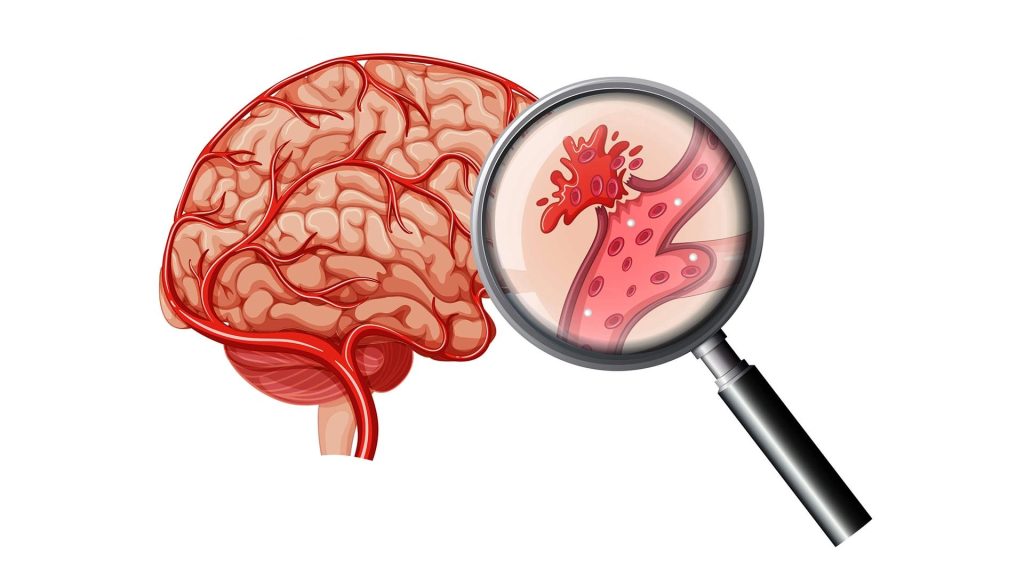An ischaemic stroke, also known as a cerebral infarction, occurs when the blood supply to the brain is interrupted, causing damage to the brain tissue. This type of stroke is the most common, accounting for approximately 85% of all strokes. In this article, we will discuss the causes, symptoms, diagnosis, treatment, and prevention of ischaemic stroke.

Causes of Ischaemic Stroke
Ischaemic stroke is caused by a blockage in one of the blood vessels that supply blood to the brain. The blockage can be due to:
1. Blood Clots: A blood clot can form in one of the blood vessels in the brain, blocking the flow of blood.
2. Atherosclerosis: The buildup of plaque in the blood vessels can cause them to narrow and harden, reducing blood flow to the brain.
3. Embolism: A blood clot or other debris can break loose from another part of the body and travel to the brain, causing a blockage.
4. Vasculitis: Inflammation of the blood vessels can cause them to narrow and reduce blood flow to the brain.
Symptoms of Ischaemic Stroke
The symptoms of ischaemic stroke can vary depending on the location and severity of the blockage. Common symptoms include:
1. Sudden Weakness or Numbness: Weakness or numbness in the face, arm, or leg on one side of the body.
2. Sudden Confusion or Trouble Speaking: Difficulty speaking or understanding speech.
3. Sudden Trouble Seeing: Blurred vision or loss of vision in one eye.
4. Sudden Severe Headache: A severe headache that comes on suddenly.
5. Sudden Trouble Walking or Dizziness: Difficulty walking or maintaining balance.
Diagnosis of Ischaemic Stroke
Diagnosing ischaemic stroke typically involves a combination of physical examination, medical history, and diagnostic tests. Common diagnostic tests include:
1. Computed Tomography (CT) Scan: A CT scan uses X-rays to create detailed images of the brain.
2. Magnetic Resonance Imaging (MRI): An MRI uses magnetic fields and radio waves to create detailed images of the brain.
3. Carotid Ultrasound: A carotid ultrasound uses sound waves to create images of the carotid arteries.
4. Angiography: Angiography uses X-rays and a contrast agent to create detailed images of the blood vessels.
Treatment of Ischaemic Stroke
Treatment for ischaemic stroke typically involves a combination of medications and medical procedures. Common treatments include:
1. Thrombolytic Therapy: Thrombolytic medications, such as tissue plasminogen activator (tPA), can help dissolve the blood clot and restore blood flow to the brain.
2. Antiplatelet Therapy: Antiplatelet medications, such as aspirin, can help prevent further blood clots from forming.
3. Anticoagulant Therapy: Anticoagulant medications, such as warfarin, can help prevent further blood clots from forming.
4. Surgery: Surgery may be necessary to remove the blood clot or repair damaged blood vessels.
Prevention of Ischaemic Stroke
Preventing ischaemic stroke involves managing risk factors and making lifestyle changes. Common prevention strategies include:
1. Blood Pressure Control: Managing high blood pressure through lifestyle changes and medication.
2. Cholesterol Management: Managing high cholesterol through lifestyle changes and medication.
3. Diabetes Management: Managing diabetes through lifestyle changes and medication.
4. Smoking Cessation: Quitting smoking to reduce the risk of stroke.
5. Physical Activity: Engaging in regular physical activity to reduce the risk of stroke.
6. Healthy Diet: Eating a healthy diet that is low in salt, sugar, and unhealthy fats.
Conclusion
Ischaemic stroke is a serious medical condition that requires prompt treatment. Understanding the causes, symptoms, diagnosis, treatment, and prevention of ischaemic stroke can help individuals take steps to reduce their risk and improve their overall health. If you or someone you know is experiencing symptoms of ischaemic stroke, call emergency services immediately.

Other stories
-
List of common medications used to manage diabetes
-
Turmeric: A Natural Remedy for Diabetes Management
-
Alpha-Lipoic Acid: A Natural Remedy for Diabetes and Neuropathy
-
Berberine: A Natural Remedy for Diabetes Management
-
Glucose: The Body’s Primary Source of Energy
